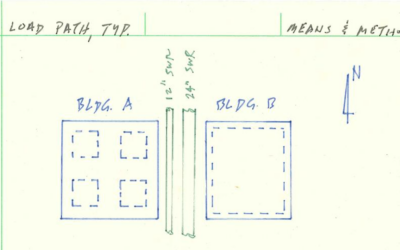The SJCC Process
We Assess Your Need
Whether you are a contractor, owner, engineer, architect, or attorney, we seek first to understand your needs and then to provide recommendations and solutions.
We Do the Hard Work
Our decades of experience in heavy and civil construction include roadway, WWTP, bridge, WWPS, utility, environmental, and building in both the public and private sectors. We’ve worked on all sizes of projects from small change orders to contracts as large as $5 billion.
You Enjoy the Results
Benefit from our specialized background in construction and engineering. Our team’s experience and education creates maximum value.
We Follow The 3 C’s Too!
If you’re a bonded contractor, you know you got there by adhering to the 3 C’s – character, capacity, and capital. We do too. Give us a call, we’re here to help!
Services
What We Do Best
Contractor Claim Support
- Entitlement evaluation
- Productivity analysis
- Quantum calculation
- Time impact analysis
Scheduling
- Project Scheduling
- Baseline development
- Monthly updates
- Submittal creation & review
- Time impact analysis
- Full technical narrative development
Construction Management
- Submittal/RFI management
- Change management/negotiation
- Value engineering
- Design/build assistance
- Schedule analysis
Expert & Forensic Work
- Construction claims – means & methods, constructability, productivity, schedule, cost, design E&O
- Insurance claims – rain, wind, earthquake, settlement
Cost Estimating
Commercial, public sector and private
- Pre-construction budgetary
- Active construction independent cost estimates
- Contractor hard bids
Taking the guesswork and risk out of job costing, so you can focus on the work.
Professional Engineering
The expertise and confidence to stamp items “traditional’ engineers will not, such as
- Thrust blocking
- Rigging
- Traffic control
- Formwork
Currently registered in ten states and Puerto Rico.
Contractor Licensing
Whether you’re crunched for time or just not computer-savvy, we help with all aspects of contractor license acquisition. We’re also a Contractor/RME “matchmaker”!
Candidate Placement
Need assistance finding the right people to build your dream team? Reach out now, we’d love to help. As a give-back to our industry, we encourage you to leverage our robust network of top professionals in the field today.
Why SJ Construction Consulting, LLC
Expertise
Decades of experience in heavy/civil, WWTP, WWPS, site, utility, bridge/roadway, and environmental work.
Responsiveness
If you call (833) SJ-CIVIL, we’ll contact you back within 4 minutes or 4 hours. Otherwise call or text our CEO at (808) 271-5150.
Resources
HCSS HeavyBid, EquipmentWatch Bluebook, Smartsheet, Revu Bluebeam, and an exclusive international list of professionals. We have the tools and contacts to directly help you, or get you to someone who can.
Decades of experience in heavy and civil construction, including roadway, WWTP, bridge, WWPS, utility, environmental, and building in both the public and private sectors. We work on projects from small change orders up to contract values of $5 billion.
We have a unique background in that our company is guided by former contractors who possess appropriate education and certifications to maximize our value to clients.
We provide pre-construction, estimating, construction management, claims, legal, surety assistance, professional services, and training.
Latest From The Podcast
Load Path & Building from the Bottom Up
Executive Summary. Everyone was taught early in their career, or even in childhood, that things are built from the bottom up. Not only logic...
Increase Profit by Rule of 27
Executive Summary. Most decisions can be further analyzed by collaborative or self-inquiry. When looking for ways to decrease costs, ask yourself...
Data Collection Without the $100,000 Fancy Toys
Executive Summary. Collecting data from a construction jobsite can serve many purposes, and all of them very beneficial. Uses such as claim...
Two Negatives of Owning Your Own Construction Business
Executive Summary. Owning your own construction business, or any business for that matter, is not all Porsches and Rolexes. It can be a lonely and...
Red Flags in Bid Day v. Change Order Pricing
Executive Summary. The difference between bid day pricing and change order pricing is miles apart because of one factor. Learn this factor and...
How to Make a Submittal – Check, Check, Check!
Executive Summary. Making submittals on a construction project is art and science. Increase your success rate on submittals using this method!...
Our Clients
Our Clients
We deal regularly with many firms from the ENR Top 15 list to those that wish they could just break into ENR’s Top 400. Conractors, engineers, attorneys, and the owners of these projects.
Client Reviews
Over fifty (50) letters from clients, plus testimonials below – SJ Construction Consulting, LLC has earned its fantastic reputation from quality work provided to great clients.























